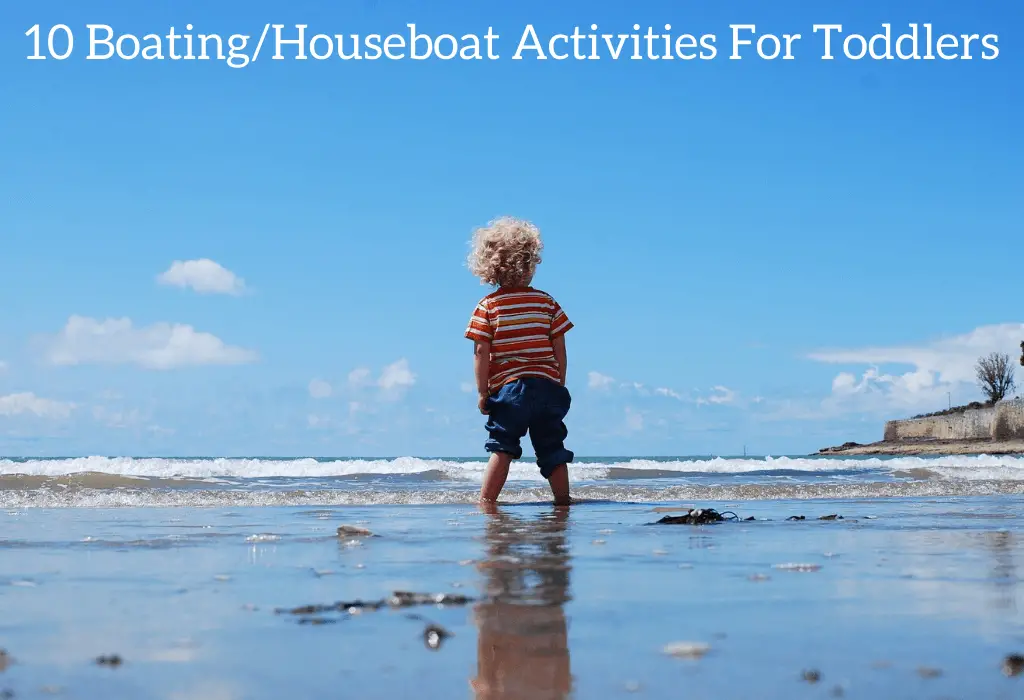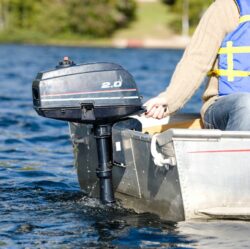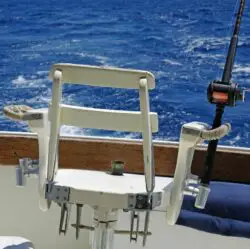Picture this: a pristine lake, a Bass Tracker boat bobbing gently, and the laughter of your family echoing across the water. If this isn’t the picture of a dreamy summer afternoon, I don’t know what is!
*This post may contain affiliate links. As an Amazon Associate we earn from qualifying purchases.
Now, imagine adding a water tube to this image, transforming the tranquil scene into an adrenaline-pumping playground. Crazy idea? Not so fast.
Let’s plunge into the fascinating world of Bass Trackers and discover if they can indeed pull a tube.
Introduction to Bass Trackers
Bass Trackers, or as I like to call them, ‘the one-man band of the boat world’, are the versatile, compact, and hardy powerhouses we all know and love. But where did these bad boys come from?
Brief history of Bass Trackers
Once upon a time, in the golden age of the ’70s, Bass Trackers were born. Kind of like the Beatles of the boating world, they revolutionized the scene, bringing compact power and affordability to the hands of anglers.
Think of them as David facing the Goliath of larger, pricier boats. They stepped into the arena with their aluminium armor, no-frills functionality, and wallet-friendly price tags.
Before you knew it, these little boats had won the hearts of fishermen far and wide.
Let’s make no mistake, these boats were bred for fishing. They were the equivalent of a swiss army knife on the water, equipped with all the nifty tools an angler could wish for.
But times change, people change, and so do our nautical needs. As my young Clara once put it, “Daddy, can’t our fishing boat be a fun boat too?” That got me thinking. Which brings us to our next point.
Common uses of Bass Trackers
When it comes to Bass Trackers, most folks would tell you they’re strictly for fishing. Hook, line, and sinker, right? Well, not quite.
You see, a Bass Tracker isn’t just a one-trick pony.
Sure, they’ve got the nifty trolling motors for sneaking up on unsuspecting fish, fish finders that could rival Sherlock Holmes, and the stability of a ballet dancer.
But they’re also good for more than just angling.
Their compact size makes them a dream to maneuver, perfect for those lazy river cruises. Or perhaps you fancy some bird-watching in the marshes.
Their low draft means you can get to those hard-to-reach places larger boats wouldn’t dare venture.
I even know a guy who uses his Tracker as a floating picnic table for family days out on the lake. Imagine that – hot dogs, s’mores, and splashes, all in one boat!
Now, we’re about to steer this Tracker in a direction some might find surprising. The question we’re asking today is not about the fish, but about the thrill. Can a Bass Tracker pull a tube?
But before we delve into that, let’s ensure we’re all on the same boat, or page, in this case, about what tubing entails.
Understanding Bass Tracker Capabilities
Before we try hitching a tube to our dear Tracker, let’s pop the hood and check out what she’s packing.
Engine specifications and power
Now, Bass Trackers aren’t exactly ‘fast and furious,’ but they’ve got enough oomph to get the job done. You’re typically looking at an engine in the 25 to 115 horsepower range, depending on the model.
That might not seem like much, but remember, we’re not racing for the America’s Cup here. As my son Jonathan once put it, after a rather exhilarating boat ride, “Daddy, this boat is faster than a cheetah!”
Well, not quite, but it’s got enough power to give you that wind-in-your-hair feeling.
Load capacity
Now, here’s where things get interesting. Bass Trackers might be compact, but they’ve got a load capacity that could give a pack mule a run for its money. We’re talking about space for a few hefty adults, their fishing gear, and a cooler or two.
Think about it this way: imagine you’re packing for a weekend camping trip. Tent, check. Food, check. Kids, check. Now imagine fitting all that onto a boat, with room to spare!
It’s like a magical clown car, but on water.
Of course, you need to keep the boat’s limitations in mind. Overloading it would be like asking a Chihuahua to pull a sled – cute but catastrophic.
But when loaded sensibly, your Tracker will serve you well, be it fishing, picnicking, or potentially even tubing. Speaking of which…
The Concept of Tubing
Like a rubber ducky on steroids, tubing is one of the most exhilarating ways to have fun on the water. But what exactly does it entail?
The fundamentals of tubing
Imagine you’re on a roller coaster. You’re climbing that steep incline, your heart’s pounding, then you take the plunge, screaming your lungs out as the wind rushes past you.
Now, imagine doing all that, but on water. That’s tubing in a nutshell. Well, a very large nutshell, pulled by a boat.
You’ve got your tube, a circular rubber dinghy, strapped to the stern of a boat with a long rope or strap. As the boat zips across the water, it pulls the tube along, bouncing, sliding, and occasionally, if you’re not holding on tight, flipping.
As Mia, my thrill-seeking daughter would say, it’s “Better than any amusement park ride, daddy!”
Popular boats used for tubing
Now, traditionally, if you were going to pull a tube, you’d be looking at a powerboat with a bit of heft to it. Something like a bowrider, a deck boat, or even a pontoon if you’re after a more leisurely experience.
These boats have the speed and power to whip a tube around like a leaf in the wind.
“But daddy, what about our boat? Can it pull a tube?” Jonathan asked one day. That got me thinking, and after much pondering and research, I realized that a Bass Tracker might just be the underdog in this tubing game.
But to understand that, we need to look at how it compares to these traditional tubing boats.
Comparing Bass Trackers with Typical Tubing Boats
Ah, the plot thickens! It’s like we’re at a point in a movie where we weigh up the odds of our underdog protagonist – the humble Bass Tracker.
Let’s see how it stacks up against its high-powered competitors in a tube pulling contest.
Speed and maneuverability comparison
Traditional tubing boats are like the Usain Bolts of the boating world, with speed and power that leave you breathless. They can churn out waves that would make a surfer weep with joy.
On the other hand, Bass Trackers, while not quite as fast, have a few tricks up their sleeves. These nimble navigators can turn on a dime, allowing for some exciting tube rides at lower speeds.
Here’s a quick comparison to give you an idea:
| Bass Tracker | Typical Tubing Boat | |
|---|---|---|
| Top Speed (mph) | 30-35 | 50-60 |
| Maneuverability | High | Moderate |
| Wave Creation | Low | High |
Remember, tubing isn’t just about speed, but also about the thrill of the ride. As they say, it’s not always about the destination, but the journey.
Engine power comparison
The engine power between Bass Trackers and typical tubing boats is like comparing a reliable family sedan to a sports car. Both will get you where you want to go, but the ride might feel a little different.
Most tubing boats sport engines well into the hundreds of horsepower, giving them the grunt to pull multiple riders or create massive waves.
Bass Trackers, on the other hand, come with smaller engines that might not make the earth tremble, but they do the job and do it well.
Once again, here’s a quick comparison:
| Bass Tracker | Typical Tubing Boat | |
|---|---|---|
| Horsepower Range | 25-115 | 150-300+ |
| Pulling Power | Moderate | High |
As my fishing buddy always says, “You don’t need a cannon to catch a fish.” Or in this case, pull a tube. It’s all about using what you’ve got effectively.
Can a Bass Tracker Pull a Tube?
Drumroll, please! This is the million-dollar question, isn’t it? The suspense is thicker than pea soup, but fear not, for we’re about to lift the curtain.
Theoretical analysis
From a pure numbers perspective, a Bass Tracker can pull a tube. I repeat, a Bass Tracker CAN pull a tube. But, there’s a catch, a big one.
Tubing with a Bass Tracker won’t be like tubing with a high-powered speedboat. There’ll be less speed, smaller waves, and less distance between the boat and tube.
You might not be skimming the water’s surface like a stone on a pond, but you’ll still have a hoot. It’s like trading a roller coaster ride for a merry-go-round, still fun, just a different kind of fun.
Real-world experiences
As they say, the proof of the pudding is in the eating. So, I did what any sensible man would do – I hitched a tube to my Tracker and took it for a spin.
Let me tell you, it was like riding a bucking bronco! The tube followed the boat like a puppy chasing its tail.
The kids were squealing with delight, the water was splashing, and the sun was shining. It was a sight for sore eyes.
Granted, we weren’t breaking any speed records, and the wake wasn’t anything to write home about. But we were tubing, and we were having a ball. And at the end of the day, isn’t that what it’s all about?
Now, before you rush out to hitch a tube to your Tracker, we need to talk about safety. Just because you can do something doesn’t mean you should.
So, let’s dive into some safety considerations when tubing with a Bass Tracker.
Safety Considerations When Tubing with a Bass Tracker
Alright, we’re sailing into some serious waters now. If there’s one thing my grandma taught me, it’s safety first, and I’m sure she’d want you to remember that too.
Weight Distribution
When it comes to tubing, or any water sport for that matter, weight distribution on your boat is as crucial as wearing sunscreen on a hot summer day. With a Bass Tracker, this balance act is even more important. Here’s why:
- Tube Weight: The weight of the tube and the rider can affect your boat’s handling. When the tube is in motion, the pulling weight increases, which can make the boat harder to control.
- Number of Passengers: If you’re not careful, you might end up with a boatload of people. Literally. More passengers mean more weight, and you don’t want your boat to be as heavy as a pregnant elephant.
- Gear Weight: Don’t forget your fishing rods, tackle boxes, and coolers full of your favorite beverages. These too add up.
- Engine Weight: The engine’s weight is already accounted for in your boat’s design, but remember it when adding more weight.
Remember, balance is key. When distributing weight on your boat, it should be evenly spread out. It’s like a perfectly layered cake, each layer supporting the next.
Weather Conditions
Ah, Mother Nature, the queen of unpredictability. One minute she’s all sunshine and rainbows, and the next, she’s throwing a tantrum with gusty winds and towering waves. Here’s what to consider:
- Wind Direction and Speed: Wind can push your boat around like a bully in a playground, making it harder to control. Keep an eye on the weather forecast and the flags on the buoys.
- Water Current: Currents can turn a calm ride into a white-knuckle adventure. Pay attention to the direction and speed of the current, especially near the shore.
- Wave Size: Big waves can be fun when tubing, but they can also capsize a small boat faster than you can say “Bass Tracker.” Be aware of other boats creating large wakes and avoid them.
Let me tell you, there’s no heroism in fighting with Mother Nature. If the weather doesn’t look favorable, there’s always another day. As the old saying goes, “Better safe than sorry.”
Legal and Ethical Considerations
Alright folks, it’s time for some Law & Order: Bass Tracker Edition. Just because we’re out in the wild doesn’t mean we can forget about the rules of the land (or water in this case).
Local Regulations
Laws on the water aren’t as loose as a fish in your hands. Different states and countries have different regulations for towing tubes, and it’s essential to know them like the back of your hand.
- Speed Limits: Most places have speed limits for towing tubes. Make sure you’re familiar with these to avoid any fishy fines.
- Equipment Requirements: Some regulations require specific equipment, like life jackets, a rear-view mirror, or a spotter. You wouldn’t want your fun day turning into a visit to the local marine patrol, would you?
- Age Limits: In some places, there might be age restrictions for drivers and tubers. Remember, we want fun, not legal trouble.
Respect for Others
We share our beautiful water bodies with others, both human and animal. Respecting them is as important as catching the big one on your fishing trip.
- No Wake Zones: Respect these zones. They’re there for a reason, like near marinas, swimming areas, or wildlife habitats.
- Other Boaters: Respect other boaters and give them a wide berth. It’s the polite thing to do, and it helps avoid accidents.
- Wildlife: Avoid disturbing wildlife. Remember, we’re visiting their home. As they say, “Take only pictures, leave only bubbles.”
As they say, an ounce of prevention is worth a pound of cure. Follow these rules, and you’re more likely to have a fun and safe tubing adventure with your Bass Tracker.
Additional Equipment for Safe Tubing
Think of your boat as a theatre stage and the additional equipment as your supporting actors. Without them, the show can’t go on. Let’s look at some of these must-have sidekicks for a safe tubing adventure.
Life Jackets
Safety is no laughing matter, and life jackets are as serious as a judge. Everyone on board, especially those on the tube, should wear a life jacket. Here are some pointers:
- Fit: A life jacket should fit as snug as a bug in a rug. A loose one can slip off, and a tight one can be uncomfortable.
- Quality: Choose a life jacket that is US Coast Guard-approved or equivalent. It’s like a seal of approval that says, “Yep, this thing will float.”
- Quantity: Have enough life jackets for everyone on board. It’s like having enough lifeboats on the Titanic (we all know how that turned out).
Tube Ropes
Tube ropes are like the lifeline between the boat and the tuber. Choosing the right one is crucial. Here’s what you need to know:
- Strength: A tube rope should be strong enough to handle the combined weight of the tube and the rider. A weak rope might snap, which is as much fun as a popped balloon.
- Length: The length of the tube rope affects the ride. A short rope gives less room for bouncing around but offers more control. A long rope allows for wilder rides but requires more skill to handle.
- Material: Tube ropes made of polypropylene are stretchy, allowing for a bouncier ride. Nylon ropes are sturdier but offer less bounce.
Mirrors
When you’re driving, you want to keep an eye on the road (or water in this case) ahead and another on the precious cargo behind. In this case, the tube (and the person on it). That’s where a good mirror comes in:
- Size and Position: The mirror should be large enough to see the tuber clearly and positioned so you can glance at it easily.
- Type: Choose a mirror designed for boating. Car mirrors might not withstand the vibrations and moisture of a boat ride.
Remember, safety isn’t expensive, it’s priceless. These equipment pieces are essential to ensure everyone has a fun and safe time.
Tips for Tubing with a Bass Tracker
Time for some sage advice. Here are some tips to keep in mind when you’re tubing with a Bass Tracker.
Start Slow
Remember, you’re not in a race. Start slow and gradually increase the speed as everyone gets comfortable. It’s like warming up before a workout.
Use Hand Signals
Communication is key. Develop some basic hand signals to communicate with the tuber. Like thumbs up for faster, thumbs down for slower, and a slashing motion across the neck for “stop.”
Take Regular Breaks
Tubing can be physically demanding. Take regular breaks to rest and hydrate. It’s not a marathon, and you’re not being timed.
As the old saying goes, “A smooth sea never made a skilled sailor.” These tips should help you navigate the waters of tubing with a Bass Tracker smoothly and safely.
Final Verdict: So, Can a Bass Tracker Pull a Tube?
Well, my friend, we’ve reached the end of our journey. Let’s wrap this up with a neat little bow.
The Answer
The short and sweet answer is yes, a Bass Tracker can pull a tube. But, it won’t be quite like tubing with a high-powered speedboat.
It’s a different experience, but that doesn’t make it any less fun. Just remember, safety is paramount.
The Experience
If you’re looking for a wild ride with high speeds and big waves, then a Bass Tracker might not be your first choice. But, if you’re after a fun, family-friendly adventure that’s more about the journey than the destination, then a Bass Tracker might be just the ticket.
So there you have it. Whether you’re a seasoned boater or a novice, tubing with a Bass Tracker is a unique and fun experience. Just remember to respect the rules, keep safety a priority, and most importantly, have fun!
Now, if you’ll excuse me, I hear the open water calling my name. My kids and I are off to create some more family memories with our trusty Bass Tracker.
Remember, the greatest catch is not the fish but the memories you reel in. See you on the water!









